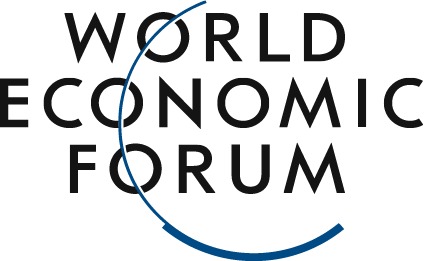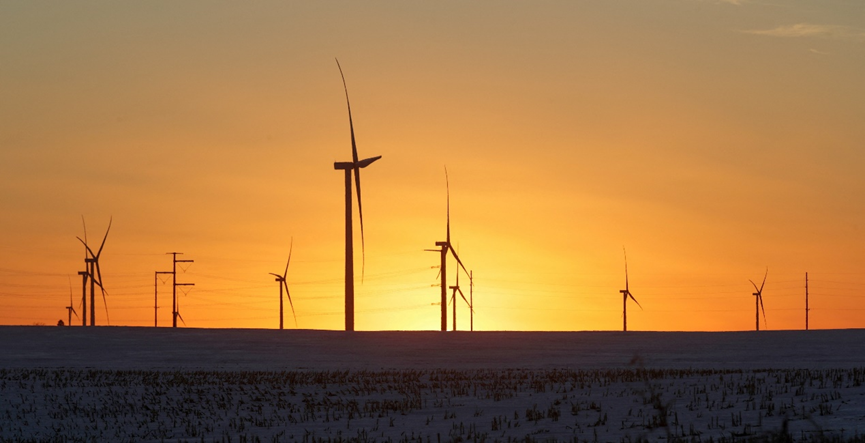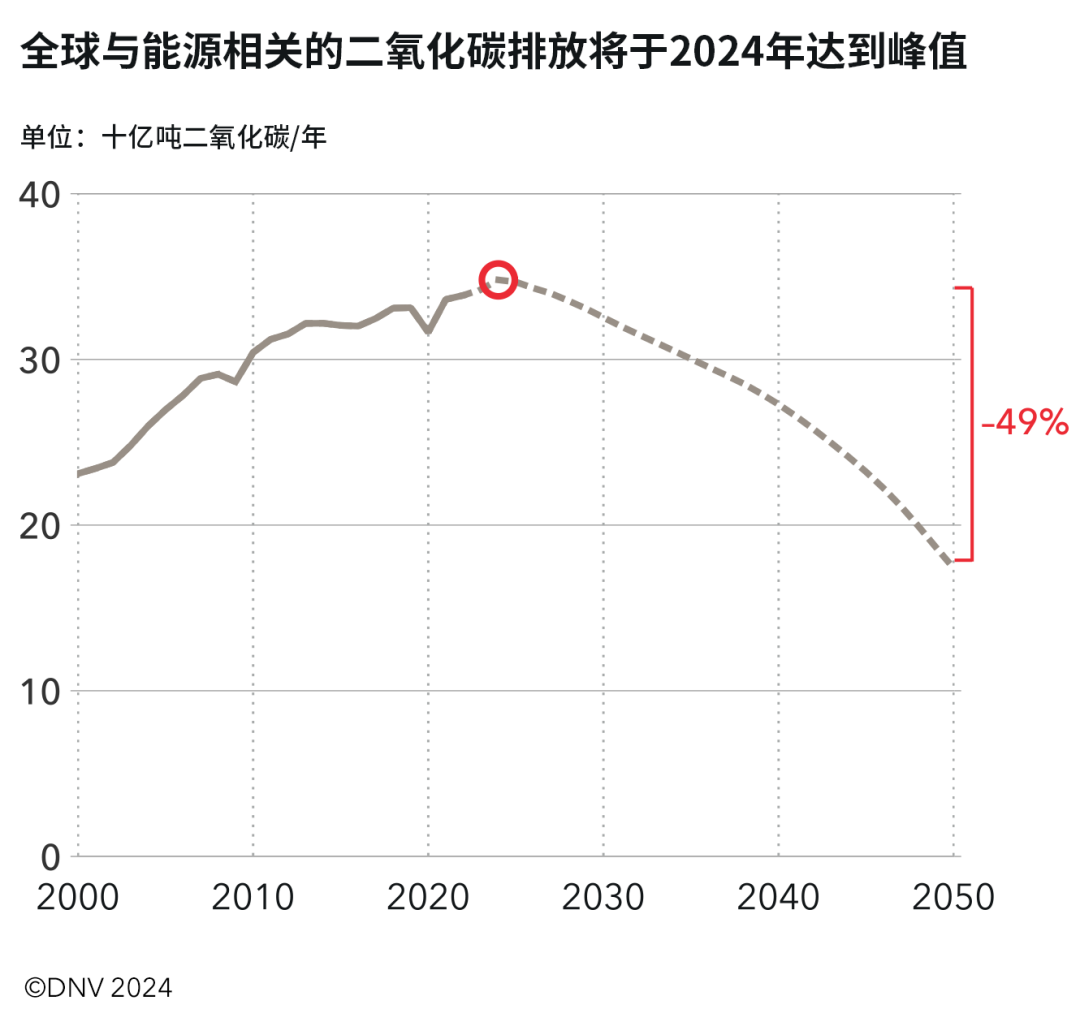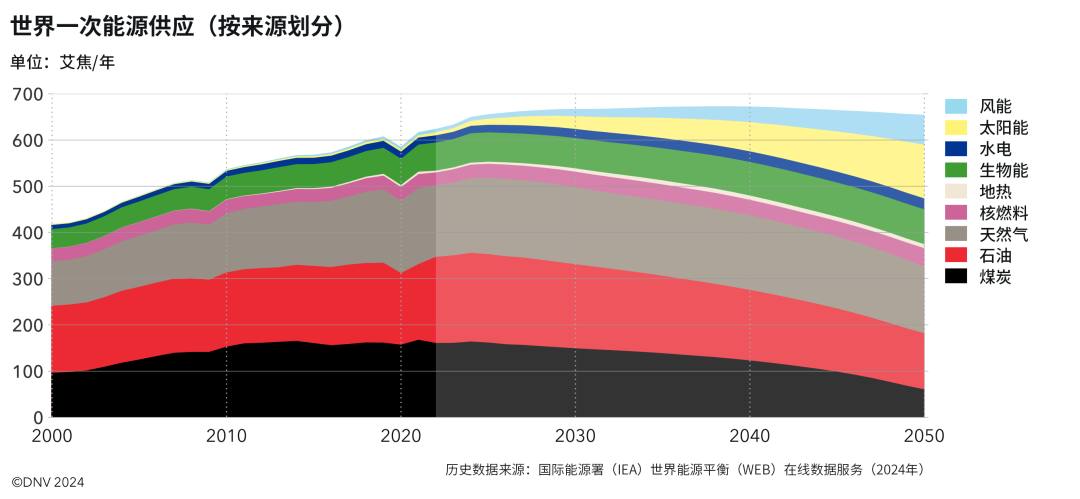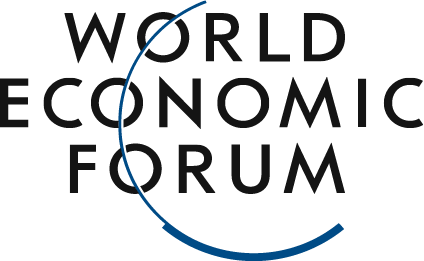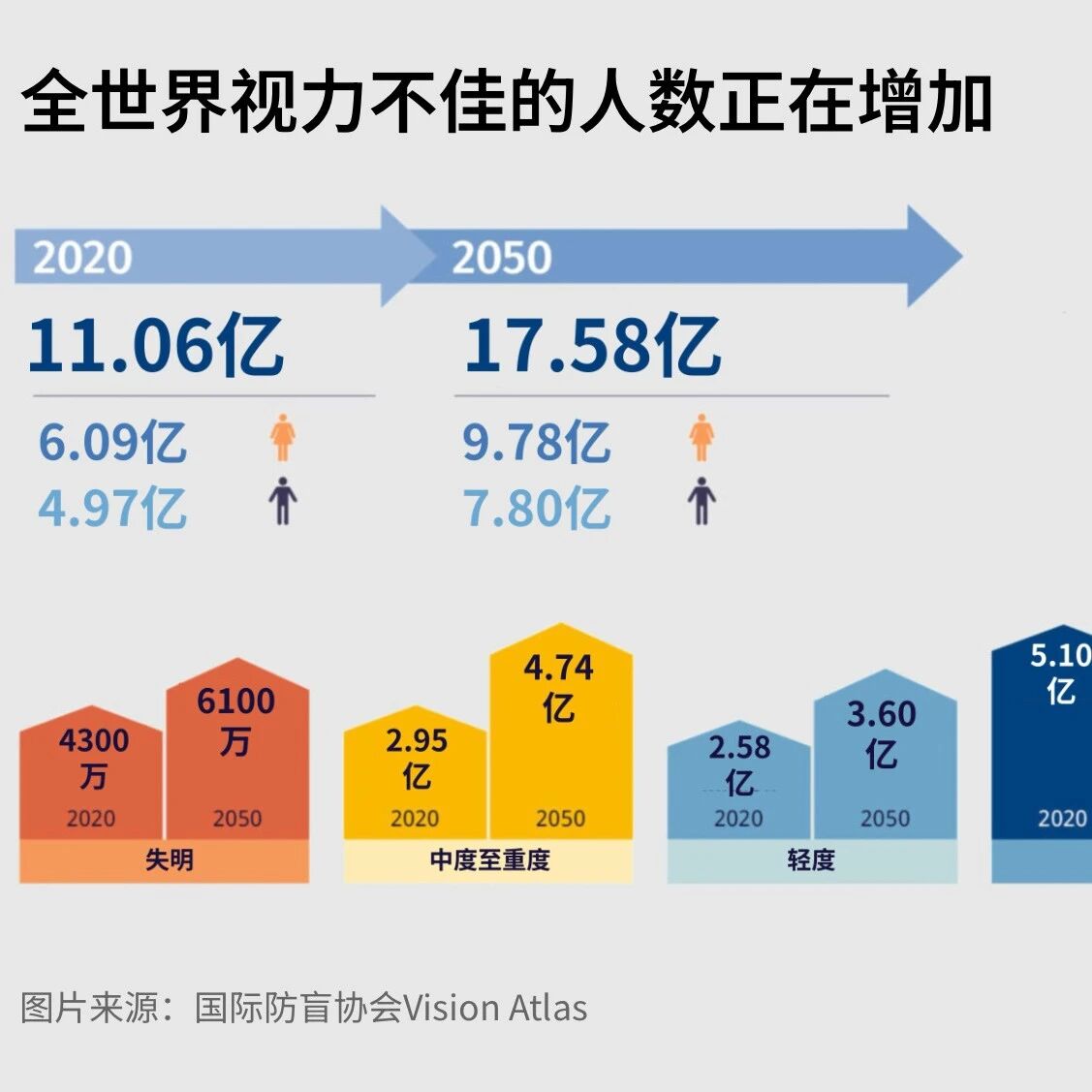,2024
:/Jonathan Ernst/File Photo
Sverre Alvik
2024,DNV,2050,,,2050,2.2,2Energy-related emissions could peak in 2024.
:DNV
Highlights: Solar Energy and the Battery IndustryOne of the standout highlights of the energy transition is the rapid advancement in solar photovoltaic (PV) installations and battery technologies. In 2023, global solar capacity surged by 80%, reaching 400 million kilowatts—satisfying a growing share of electricity demand and helping to curb the expansion of coal-fired power generation. Meanwhile, battery costs have plummeted dramatically—falling by 14% last year—making 24-hour "PV-plus-storage" systems not only more viable but also increasingly cost-effective. Additionally, the rising popularity of electric vehicles (EVs), particularly in China, has driven down oil demand while signaling society’s broader shift toward clean energy.In the coming decades, the importance of zero-emission energy in energy systems is expected to steadily increase.
:DNV
Industries that are difficult to electrify face challenges.Despite some progress made, industries like heavy industry, shipping, and aviation—sectors that are particularly challenging to electrify—still face significant hurdles in achieving a decarbonization transition. Technologies such as hydrogen energy and carbon capture and storage (CCS) are crucial for enabling a transformation aligned with the Paris Agreement. However, widespread adoption of these technologies remains difficult due to high costs and market uncertainties. Since last year, DN has lowered its long-term forecast for hydrogen and its derivative products by 20%, underscoring the need for stronger policy support and meaningful carbon pricing to accelerate their deployment. In areas where hydrogen competes directly with electricity, hydrogen currently holds the disadvantage. Meanwhile, in industries where switching to electricity isn’t an option, the transition process is even slower.Market Forces and National PoliciesRelying solely on market forces is insufficient to achieve the necessary emissions reduction targets. While market dynamics have played a key role in driving the adoption of renewable electricity and electric vehicles, they fall short when it comes to tackling the complex challenges in other sectors. Carbon pricing has failed to fully reflect the true cost of carbon emissions, and fossil fuel subsidies continue to distort market incentives. Europe’s comprehensive decarbonization strategy, which combines renewable energy incentives with carbon pricing aimed at curbing emissions, serves as a model for other regions.National and economic security priorities further complicate the transition, as these concerns are driving countries to build new, alternative supply chains and strengthen their national control over resources and manufacturing. Such moves often lead to higher costs and may divert investment away from clean energy initiatives. Additionally, elevated borrowing costs—particularly for stakeholders like households—are posing another significant hurdle. Policymakers must strike a careful balance among these competing priorities.To achieve the "1.5°C" target, temperatures will inevitably need to overshoot temporarily—albeit significantly. But we cannot give up; instead, meeting the "well below 2°C" goal set in the Paris Agreement has never been more critical. This ambitious target should inspire us to keep pushing forward—especially now, as global energy emissions are on the verge of peaking.The above content solely represents the author's personal views.This article is translated from the World Economic Forum's Agenda blog; the Chinese version is for reference purposes only.Feel free to share this on WeChat Moments; please leave a comment below the post if you’d like to republish.
Translated by: Sun Qian | Edited by: Wang Can
The World Economic Forum is an independent and neutral platform dedicated to bringing together diverse perspectives to discuss critical global, regional, and industry-specific issues.
Follow us on Weibo, WeChat Video Channels, Douyin, and Xiaohongshu!
"World Economic Forum"
